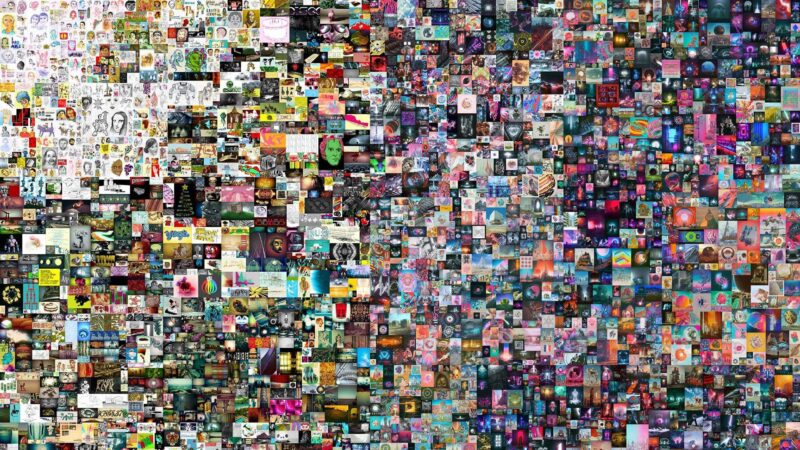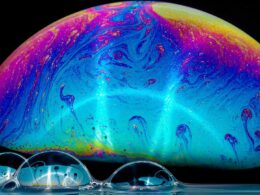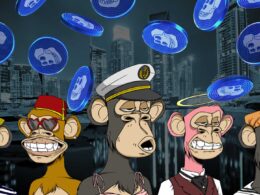NFTs are super divisive you either can’t get enough of them, or you think they are a money laundering, energy wasting scam. But did you know that NFTs have a ton of other use cases besides just digital collectibles.
When we look at the current state of NFTs it’s honestly normal to be skeptical. People are spending hundreds of thousands of dollars on jpegs, that you can just download and call your own. Even I’m still a little bit skeptical, even though I bought my first NFT a few weeks ago, maybe that means I’m still NGMI. But here’s the thing, NFTs are a flexible technology, they have unique properties that make them useful in a variety of use cases, not just as digital art.
Honestly, I believe that it’s those other use cases that are really going to take off in the future. After all we often see technology iterate and evolve over time, starting off one way and then growing so much that is almost unrecognizable a few years later. One great example in crypto is decentralized exchanges. Do you remember IDEX back in the day? Now everyone uses things like Uniswap which is way different from its predecessors.
My point here is that the state of NFTs right now will likely change and look way different in the future. That’s why I think it’s worth taking a closer look at what else NFTs are good for, and whether or not we can form an investment thesis around that.
That’s exactly what we’re going to do here, I’ll give you a super quick recap of NFTs, next we’ll dive into a handful of different use cases and industries that could be a great fit for NFTs. Then I’ll share some creative ways that you can invest beyond just buying punks, apes, or bears. Finally, I’ll share my vision of what the NFT world could look like in the future.
We know that NFT stand for non-fungible tokens, essentially an NFT is a special type of token that permanently lives on the blockchain, cannot be replicated nor counterfeited, and its owner can prove that they own it. These properties make them great for representing other assets like an image, audio clip, video, anything really. You can just include a link to the asset within the NFT’s metadata and then boom! Now it lives on the blockchain and has all those other properties I listed earlier. It’s really no surprise that NFTs are primarily used as digital collectibles and digital art in these early years, they are the most straightforward use case after all. That’s why we saw people flock to CryptoKitties back in 2017, and more recently Beeple sold his art as NFTs for millions of dollars. Even Jack Dorsey selling his first ever tweet as an NFT for 2.9 million dollars.
Fast forward to today and we have a ton of different NFT collections that people are using as their profile pictures. I’ve seen punks, apes, lions, there’s really too many to keep track of. But what if we zoom out and look beyond the current wave of hype. What else can NFTs be used for besides these jpegs that arguably have no utility?
For one there’s gaming, we’ve already seen this a little bit but it’s a perfect fit because within video games you have characters or items with different attributes, and if they are represented by NFTs you can easily tell how rare they are. Not to mention if they’re NFTs, that means they can be tradable on outside marketplaces, and it’s not only confined to the game anymore.
This is amazing for gamers who poured their hearts and souls into the game and got like a level 100 mage with a rare wizard stuff, but then gave up all of that value when they left to go play some other game. If they instead owned an NFT of their character or item, someone else can buy that from them to level up more quickly. In return the gamer gets cash money that they can pocket or perhaps use to buy stuff in the next game that they play.
This is not only amazing for the gamers, but the developers can also generate a lot more revenue from this as well. Because now their items can attract outside speculators, who aren’t necessarily the direct players of their games. The best part is that you can code NFTs to send a percentage of all future sales back to the owner’s wallet, so if there’s a bustling secondary market for their in-game NFTs then the devs can get that juicy passive income rolling in. Some great examples of NFT games are Gods Unchained, Axie Infinity and The Sandbox. With some new ones coming out soon like STAR ATLAS and Illuvium.
Another great use case for NFTs is tracking physical goods like luxury items. For example, slap a QR code on a Gucci bag that links to an NFT and you can easily verify ownership and authenticity that way. Because within the tokens metadata you can write a lot of information like which warehouse it came from, which distributor did it go to, and at what time exactly. Basically, you can track the entire supply chain journey in detail and give consumers easy access to see that information.
This goes beyond luxury goods. It works for anything where more insight into the product’s life cycle matters like food, perishable goods, or commodities. In terms of projects working on this, Vee chain comes to mind. But I’m sure there are some other smaller ones building in this vertical as well.
Next up is ticketing for events. Like sports games or concerts, you could utilize NFTs in addition to or in place of physical tickets. Many places already let us scan a QR code on our phone for tickets these days, but with NFTs you can easily avoid counterfeits as both an event goer and as the event host.
Another cool thing is that event goers can hold these NFTs as proof that they were there. It can live in your wallet with all the other NFTs you hold, so when people look at your collection they can be like “Hey that’s cool! I was at Coachella that year too.”
Now another use case that makes a lot of sense is for licensing and certifications. You could create NFTs to represent a diploma or a certificate that you completed a course. That way people can easily verify their authenticity and don’t have to worry about forgeries. This could make the process faster and easier for employers, universities or whoever cares about that stuff.
But if we zoom out even more, NFTs could be used to represent various forms of intellectual property. They could represent patents and let patent holders easily commercialize and trade them. They could also represent IP rights to music, art, and whatnot. Even allow holders to fractionalize their IP and sell them to bring in revenue. This use case can make a lot of sense to me, but the big hurdle here is that the government has to play ball and recognize those NFTs, which you already know will be an uphill battle.
Now this last use case is quite special, but did you know that those popular ENS usernames are also NFTs? You might have noticed people on twitter with a dot eth in their name like Vitalik Buterin. They are non-fungible, and they have all the other qualities and features of NFTs. With these usernames you can receive all sorts of cryptocurrencies and since it’s a token you can buy or sell them on OpenSea as well. My point here is that NFTs can be used as digital IDs, and this is a strong use case that we may see expanding in the coming years.
So far, we haven’t talked too much about investment opportunities yet. Let’s do that right now. How can we invest in these other use cases of NFTs? For NFT games you could either buy the in-game item NFTs like Axies for example. Or you can buy the governance token behind the game if they have one, that would be AXS token or SAND.
For ENS names you could buy a ton of usernames and hope that someone buys them from you in the future, like Budweiser bought the beer.eth name from someone for almost one hundred thousand dollars. This is similar to domain squatting but just FYI the demand for these is not that much compared to actual website domains, so you may have to wait a long time before a buyer emerges, even if you own some top-tier ENS names.
As for the other use cases like licensing, ticketing, or things like that, there’s not really a good way to invest unless you know of a project building in that space. Just make sure that the utilization of NFTs is legitimate and not just some marketing buzzwords. Otherwise, they’re probably going to turn out like those ICOs from 2017. A lot of promises but headed for the graveyard.
As for what I think the future of NFTs will look like. I think most of these profile picture collections or even digital artwork will head to zero. Because of simple economics, there are too many new ones coming out and they are fighting for limited capital. I do think the original collections will retain value, as well as the ones whose community has reached critical mass. But that’s like 2% of all of them out there.
As for the other use cases, the sky’s the limit. I expect that as better infrastructure for NFTs is built, the adoption of NFTs and all those other verticals will accelerate. You may have heard of people talking about the metaverse before and how we’re slowly entering in as a society. You can bet that NFTs are going to be a crucial component in that world.
My takeaway is that we’re truly still early. Be patient and there will be plenty of opportunities for investment in the coming years, it is a long game after all. NFTs are here to stay even though the current bubble may pop soon. Keep your eyes peeled for what comes next.








